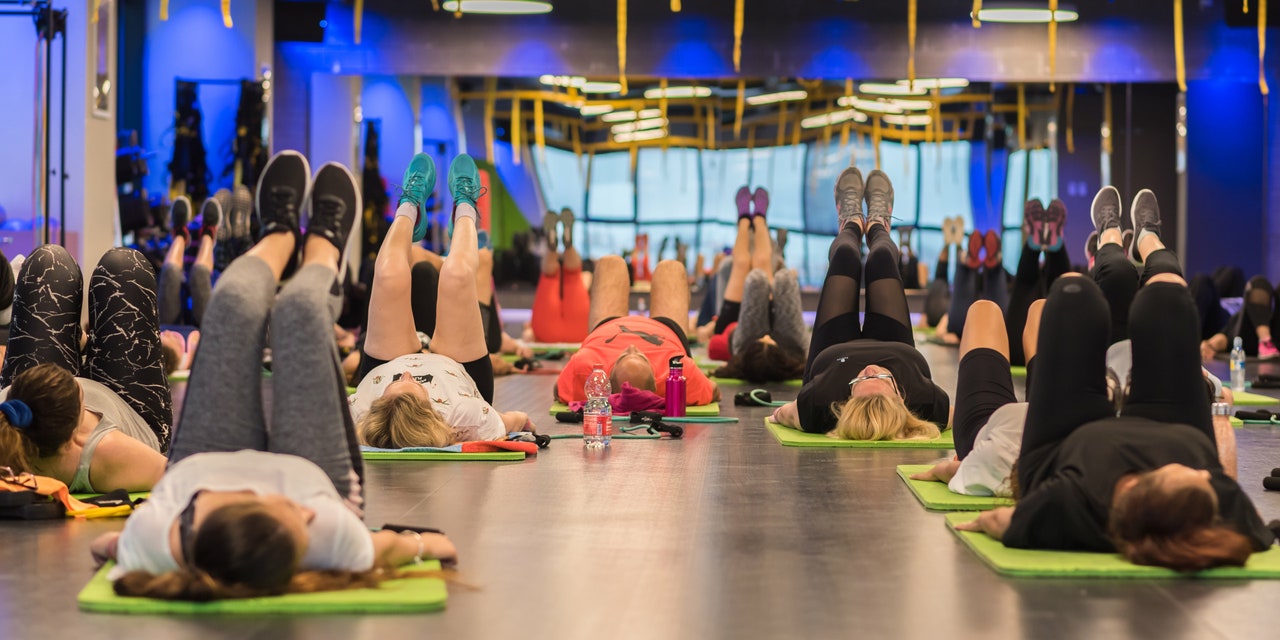Your body definitely needs time to prepare before you jump into a sprint, a heavy lift, or anything plyometric—explosive moves that often involve jumping—to prevent injury. And it also needs time to adjust from your car, traffic, sitting at a desk, a stressful Zoom meeting, an argument with your partner, or whatever else you came from prior to your workout. It’s always good to give your mind a moment to refocus on what’s ahead, and a warm-up provides that time to just bring yourself back into your body.
A good instructor or trainer will get you warmed up for class and cooled down afterward. A great instructor will give you an intentional warm-up that is specifically geared to prepare you for the exact type of movements you will need for that particular class. Say, for instance, hip mobility sequences before a running class, shoulder openers prior to arm balances in yoga, or core activation before, well, pretty much any kind of movement. Same holds true for cool-down, too: A great instructor will provide one that brings your body back from a heightened state to a more neutral one, releasing the tension from the muscles you worked on that day.
I know sometimes instructors (especially newer ones) will run out of time for a cool-down or stretch. It can and has happened to the best of us, but at the very least, if this does occur, they should advise you on some movements or stretches to do on your own. And if this becomes habitual, I would look for a different class to attend.
2. There’s no talk about modifications.
Something that I’m continuously working on is finding ways to succinctly offer a wide range of modifications for various moves or poses. It’s something a lot of instructors struggle with, especially if they’re new to being in front of a class. A super green instructor may be more focused on just getting the words out, keeping time, or making sure that the class is following along, and may let offering different ways to do things fall by the wayside.
READ RELATED: Should I worry about noise pollution?
But I can’t understate the importance of modifications. For one, it makes a class more inclusive and welcoming for various bodies, as well as for people of differing abilities or who have any conditions or injuries that may make some moves more difficult. But modifications also help students explore what actually works best for them. For instance, lowering to your knees in a push-up may help you get a better range of motion or help keep your body in better alignment. Even in more “advanced” classes, offering modifications is still super important because it gives students permission to listen to their bodies that day—which, in my opinion, is actually the truest indication of “advanced.”
When I take a class and the instructor gives lots of options and modifications, it’s a signal to me that they really know the material they are teaching. It’s much easier to offer a bunch of variations and modifications when you have an in-depth knowledge of what the move or pose is actually meant to do. If an instructor is just memorizing cues, or they really don’t know what muscles are behind a certain movement, they might not be prepared to offer adjustments or replacements that could help reach the same goal. Giving modifications also shows that they truly understand the various bodies that might be in class, and that they care about the class learning how to properly progress.
3. The instructor’s “motivation” makes you feel worse.
Shaming you as a means to push or motivate you—for example, saying things like “no girlie push-ups” or “I don’t want to see anyone grabbing those light weights!”—is an absolute no. The same goes for forcing you into a move either verbally or physically. No, no, and more no.





